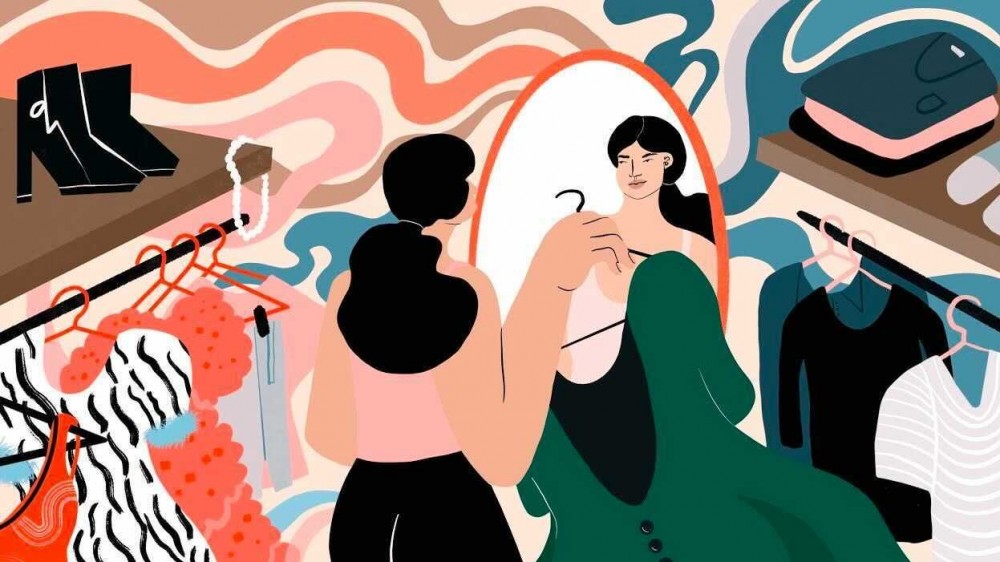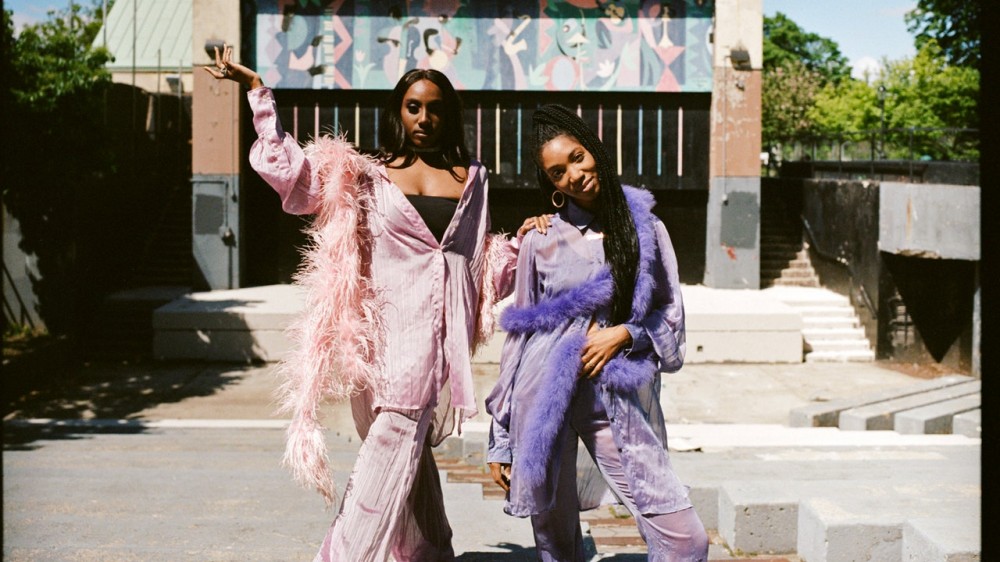
From My Mother’s Closet to a Wardrobe of My Own
I used to fashion a pair of oversized, mesh gym shorts my mom bought me from the boys’ section into a pencil skirt by slipping my whole body through one of the leg holes. It covered my torso down to mid-thigh, tightly hugging my flat butt, straight hips, and chubby belly. A leg-less droop of fabric swung behind me whenever I browsed the racks of her closet. Two rows of animal print, zippered vests, and tapestry jackets created a sea of color that washed me back to the 1980s before I’d even been conceived.
My mom was a 40-year-old hairdresser when she had me, so her wardrobe reflected a two-decade extension of her 20s as a party-girl and blue-collar socialite. Whenever I spent time in her closet, I’d hear the echo of my father’s voice condemning me for “faggy” behavior through an impression of his favorite Lenny Bruce skit. It was an animated short about the Lone Ranger, a homophobic take. “The masked fag man!” he’d exclaim with contention. “I bet he’s got mascara on under that mask.” And the only mask I grew up knowing was the one my parents put on me when futile attempts to show them who I was were met with disapproval. As a transgender girl growing up in Southeastern Tennessee in the late ’90s, I didn’t have language to convey who I was to them or myself—but every time I opened the doors to this closet, I escaped into a space where words and labels didn’t matter. I saw myself, my true self, every time I tried on my favorite dress: an emerald green, floor-length gown of satin fabric with velvet buttons and large shoulder pads. It was elegant—intended for cocktail parties or a night at the grand theatre.
I mostly wore the gown to attend a theater of my own making: Leave It To Beaver reruns on their clunky wood-paneled, rabbit-eared TV. My other excursions to her closet allowed me to conceive of a world where I could embrace and love the girl I knew I was, and I took imaginary day trips outfitted in her clothes. Swimsuits brought to a day at the beach on the wobbly waves of their oversized water bed. I wore denim outfits for a more casual day of jewelry shopping inside her vanity drawers and tight black skirts with sequin tops for a night of special desserts as if I were out on the town. I stared at the mirror and sighed with relief as an affirming reflection smiled back at me. I felt pretty—confident—and filled with hope that I could someday wear something like this out to an event.
On the surface, her closet was a hole in the wall with ill-fitted bi-fold doors made of particle board in an aging home, but it allowed me to step out of the constraints of my own literal and figurative closets into a world where I could safely explore what it meant to be me. I didn’t know any openly trans people and I couldn’t rely on television or children’s books to accurately represent the experience either. Beyond affirmation, this nook provided valuable refuge throughout my childhood and offered much needed comfort in times of hardship and isolation. When my best friend died unexpectedly, when neighborhood bullies became unbearable, and during the worst of my fathers alcoholic episodes, it was my retreat.
By the time I had reached my teen years, I no longer had access to my mom’s bedroom as a play space. The expectations of projected masculinity made her room off limits in this way, and I lost the ability to meet myself in moments in front of the mirror. While puberty began to morph my body, I learned to live into the mask that my parents insisted I wear for the world. Although I never forgot about my own personal Narnia, I wasn’t allowed to visit anymore. The older I got, the more I felt pressured to conform to the gender that was assigned to me even in my alone time. I was taught to treat my gender identity as an addiction that required rehabilitation and began counting the days, weeks, years in-between these moments of authenticity as if they were feats of sobriety.
An innocent exploration of self-expression turned to petty theft whenever my mom asked me to drop off donations to the local Goodwill store. I’d shove her old tights, leggings, and tank tops into the back of my dresser where she jokingly told me she avoided out of fear that she’d bump into condoms and Playboy magazines—neither of which I possessed. The last time I saw my favorite dress, I hadn’t worn it in two years. This time, instead of being displayed in prominence from the walls of my sanctuary, it was carelessly shoved into the depths of an overstuffed, Force-Flex trash bag. It felt like an extension of my parents’ cruelty, a twisted reminder of a life I couldn’t live. Every dress I delivered to Goodwill I’m sure was shredded into rags.
I spent almost a full decade after moving out of my parents’ house denying my gender identity. I got married, had kids, and developed a career while wearing the mask my parents aggressively expected me to embody with manliness. The burden of this false shame and decades of repression had a dramatic impact on my mental health, and I battled through my own debilitating depression, cynicism, and alcoholism. I shrugged and normalized those experiences as if they were typical family heirlooms for too long—creating ripples where my own internalized transphobia impacted my partner, my kids, and other people I loved most. I struggled with repression before finally starting hormone replacement therapy in 2020, beginning to transition when the pandemic offered time away from the public gaze to explore my authenticity. The space allowed me to heal.
Over the last year my closet has quickly evolved as I found outfits to reflect my path forward. My wardrobe looks nothing like my mother’s despite my girlhood daydreams that I’d someday get to dress just like her. I don’t own a gown, and I’m not sure I’ll ever need one practically speaking. The pandemic surely hasn’t created any opportunities. Instead, I pair baggy sweaters with leggings that make me feel cozy on cold days, lounge in high-waisted jumpsuits that accentuate my long legs, and slip into boho dresses that flow with carefree abandon. My womanhood is defined by much more than my wardrobe, but it’s been nice to finally greet a reflection I know is me in the mirror every day.



